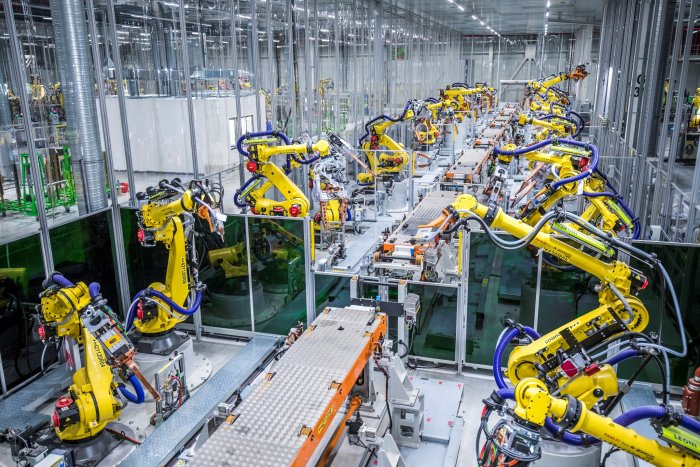Hungaryʼs ratio of robot use among lowest in EU

Hungary is close to the bottom of an EU table of companies using industrial or service robots, with only 3% of businesses using robots, according to 2018 data just released by the European Unionʼs statistical body Eurostat.
Industrial robots in action at German car maker Audi
In 2018, some 7% of all EU enterprises employing at least 10 persons used industrial or service robots. Large enterprises use robots much more often (25% of enterprises employing 250 persons or more) than medium enterprises (12% of enterprises employing 50 to 249 persons), or small enterprises (5% of enterprises employing 10 to 49 persons), the report notes.
The lowest ratio of businesses using robots was noted in Cyprus (1%), followed by Estonia, Greece, Lithuania, Hungary, and Romania (all 3%). The largest ratios were recorded in Spain (11%), Denmark and Finland (both 10%), and Italy (9%).
According to their intended application, these automation aids can be classified as industrial or service robots. While industrial robots are mainly used in industrial automation and perform their tasks in clearly structured environments with external safeguards, service robots have a certain level of autonomy and the ability to operate in complex environments that may require interaction with persons, objects or other devices, Eurostat said.
Enterprises more commonly use industrial robots (5%) than service robots (2%). Industrial robots are most often used in the manufacturing sector (16%), and service robots in manufacturing and the retail trade (both 4%).
Enterprises use service robots mainly for warehouse management systems (44% of enterprises that used service robots), followed by transportation of people or goods (22%), cleaning or waste disposal tasks, as well as assembly works (21% each).
Eurostat data show that half of big Hungarian companies - i.e. those employing at least 250 people - use service robots on their assembly lines, compared to 32% in the European Union as a whole. In other countries in the CEE region, some 67% of big companies use assembly line service robots in the Czech Republic, 29% in Poland, and 31% in Slovakia.
SUPPORT THE BUDAPEST BUSINESS JOURNAL
Producing journalism that is worthy of the name is a costly business. For 27 years, the publishers, editors and reporters of the Budapest Business Journal have striven to bring you business news that works, information that you can trust, that is factual, accurate and presented without fear or favor.
Newspaper organizations across the globe have struggled to find a business model that allows them to continue to excel, without compromising their ability to perform. Most recently, some have experimented with the idea of involving their most important stakeholders, their readers.
We would like to offer that same opportunity to our readers. We would like to invite you to help us deliver the quality business journalism you require. Hit our Support the BBJ button and you can choose the how much and how often you send us your contributions.








